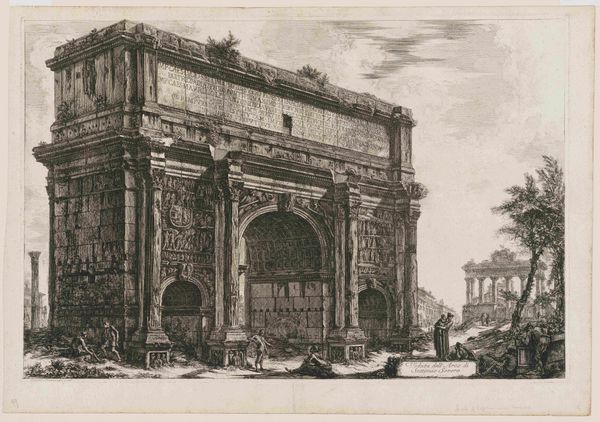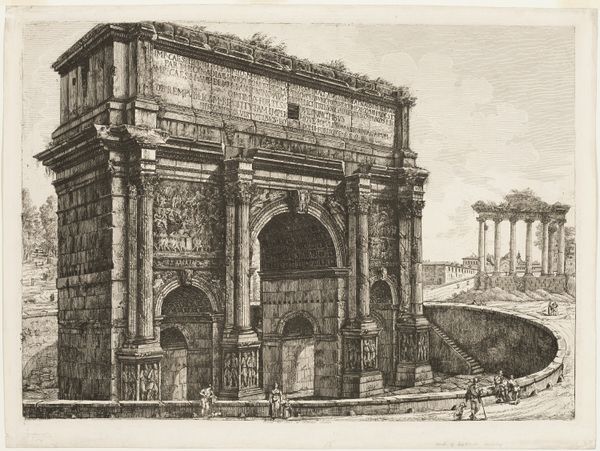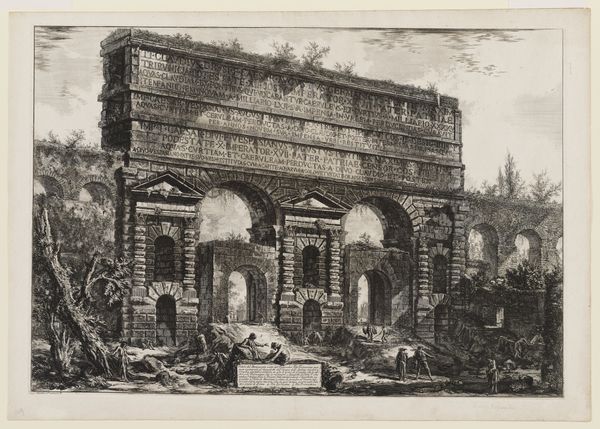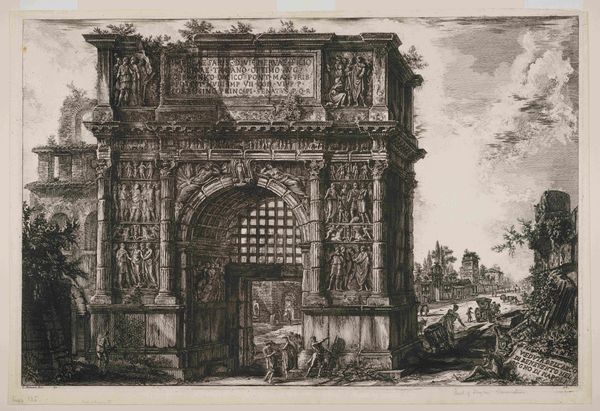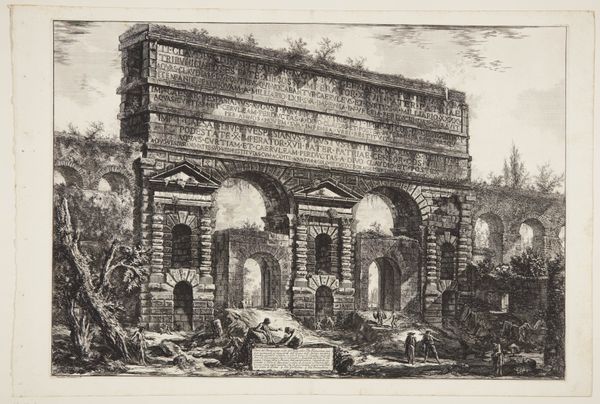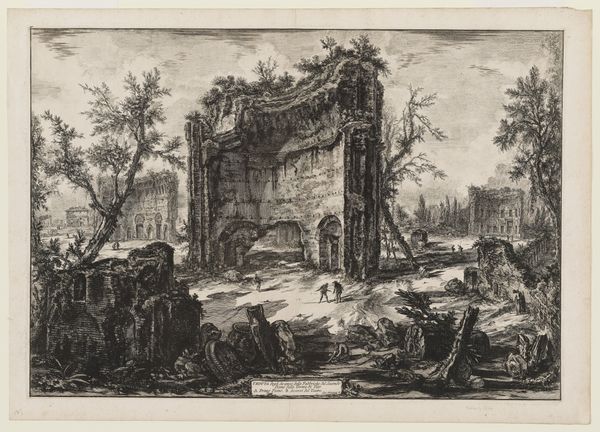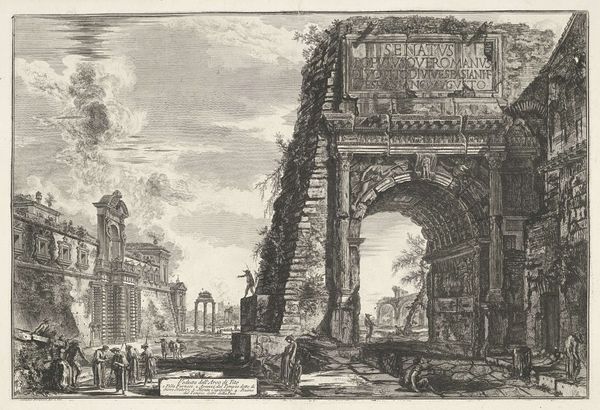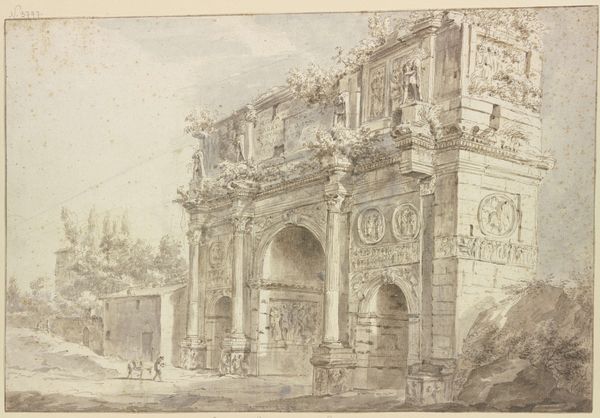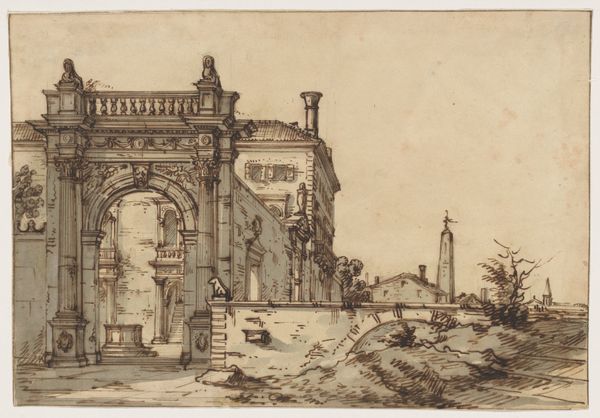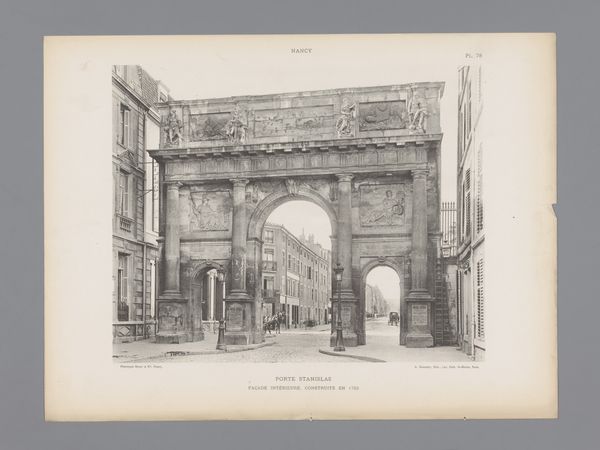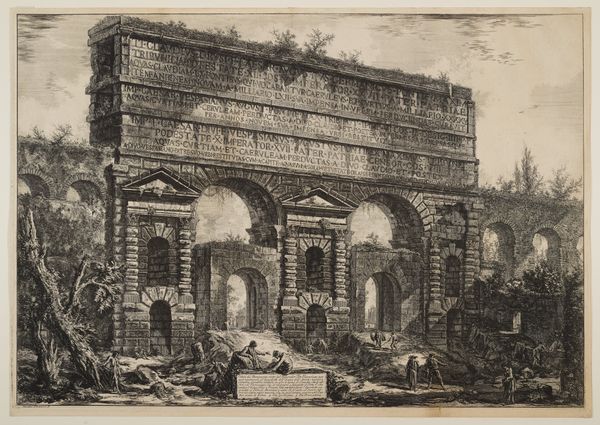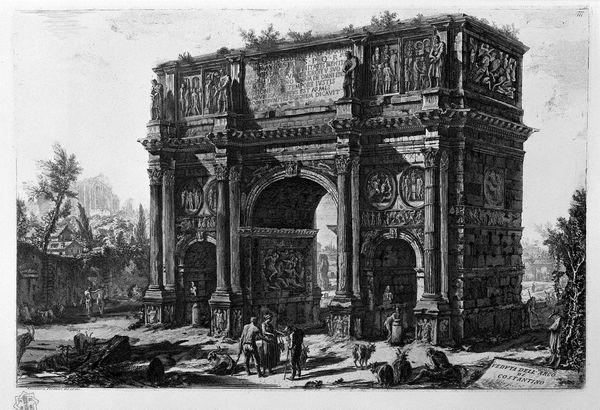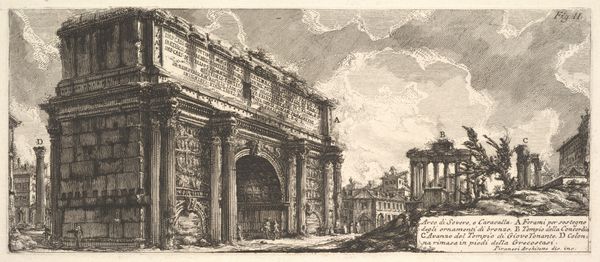
print, etching, engraving
# print
#
etching
#
landscape
#
etching
#
romanesque
#
ancient-mediterranean
#
cityscape
#
engraving
Dimensions: 18 3/8 x 27 5/8 in. (46.67 x 70.17 cm) (plate)
Copyright: Public Domain
Editor: We’re looking at Giovanni Battista Piranesi’s "The Temple of Saturn," an etching and engraving from 1774. It’s incredibly detailed, almost overwhelmingly so, and it feels very dramatic, like a stage set for some grand historical event. What strikes you most when you look at this? Curator: I am fascinated by how Piranesi evokes the grandeur of Rome, not just as a physical place but as a repository of cultural memory. Look at how the temple, or what's left of it, looms over the everyday lives of the figures in the foreground. Notice the goats, seemingly oblivious to the architectural giant behind them. What do they tell us about time, memory, and continuity? Editor: That contrast is really interesting – the monumental and the mundane coexisting. It's almost as if the weight of history is pressing down on the present. Are there specific symbols or motifs here that contribute to that feeling? Curator: Absolutely. The architectural details, the inscriptions, the very ruinous state of the structure—they all serve as visual cues, reminding us of the passage of time and the inevitable decay of even the most powerful empires. Consider also the use of light and shadow, how Piranesi emphasizes certain details while obscuring others, adding to the sense of mystery and perhaps even melancholy. Can we truly grasp the past or are we only left with fragments, shadows of what once was? Editor: So, it's not just a depiction of a temple but also a meditation on time and history, a way of connecting us to the past through visual symbols? Curator: Precisely! Piranesi isn’t simply documenting a structure, he's crafting a narrative. He invites us to contemplate our relationship to history, to recognize the echoes of the past in our present, and perhaps even glimpse the cycles of rise and fall inherent in human civilization. Editor: I never would have considered how loaded it is with symbols beyond just the architectural rendering. It gives me a whole new appreciation for how much meaning an artist can embed in an image. Curator: Indeed. Every line, every shadow, every figure contributes to a layered experience of memory and its continuous shaping.
Comments
No comments
Be the first to comment and join the conversation on the ultimate creative platform.
